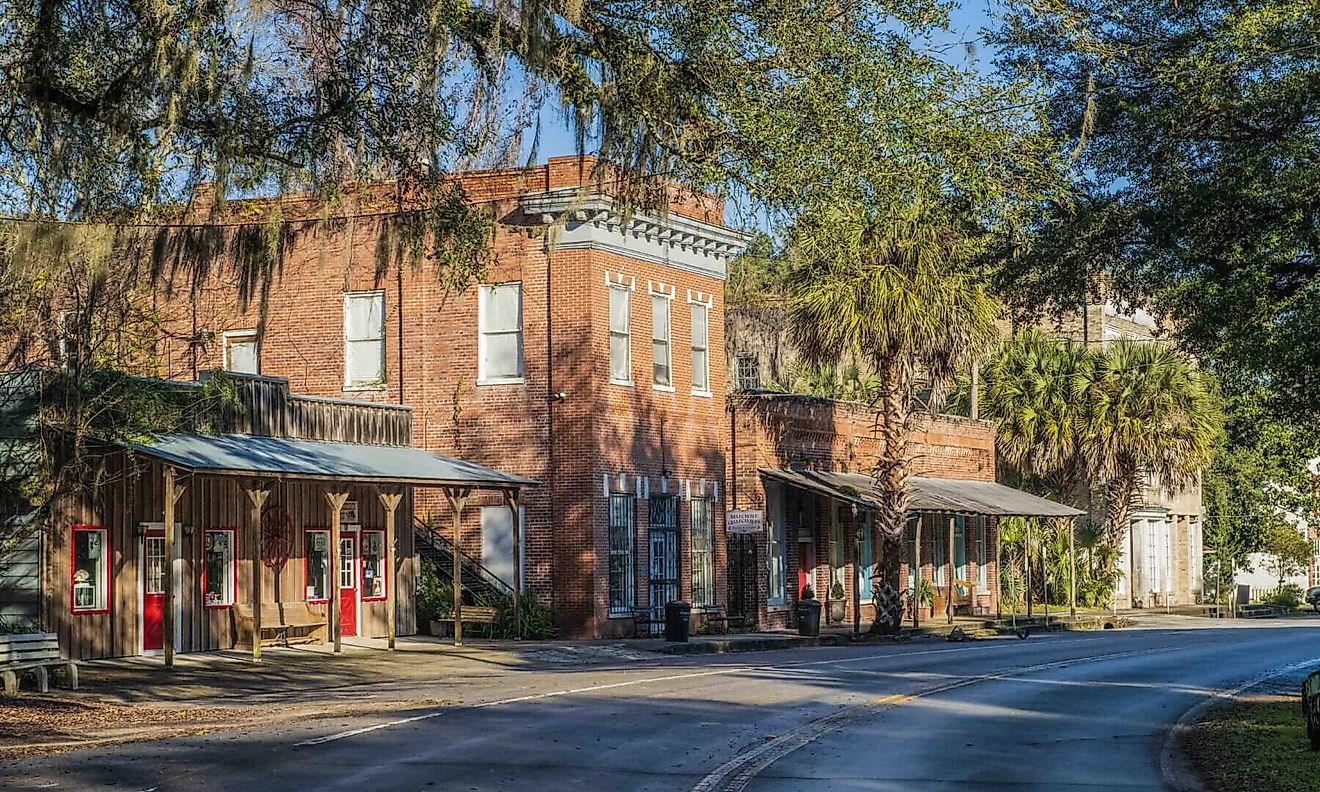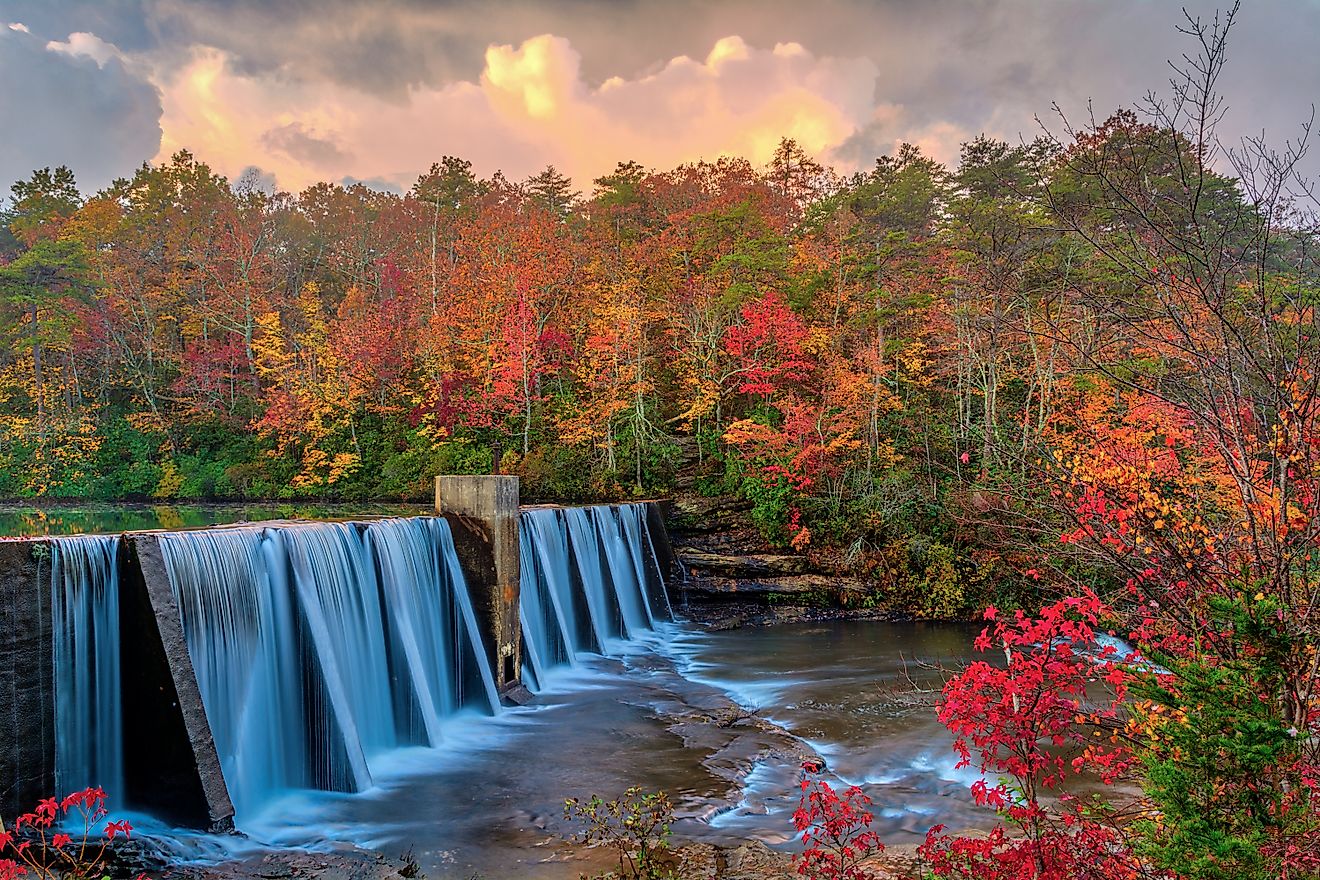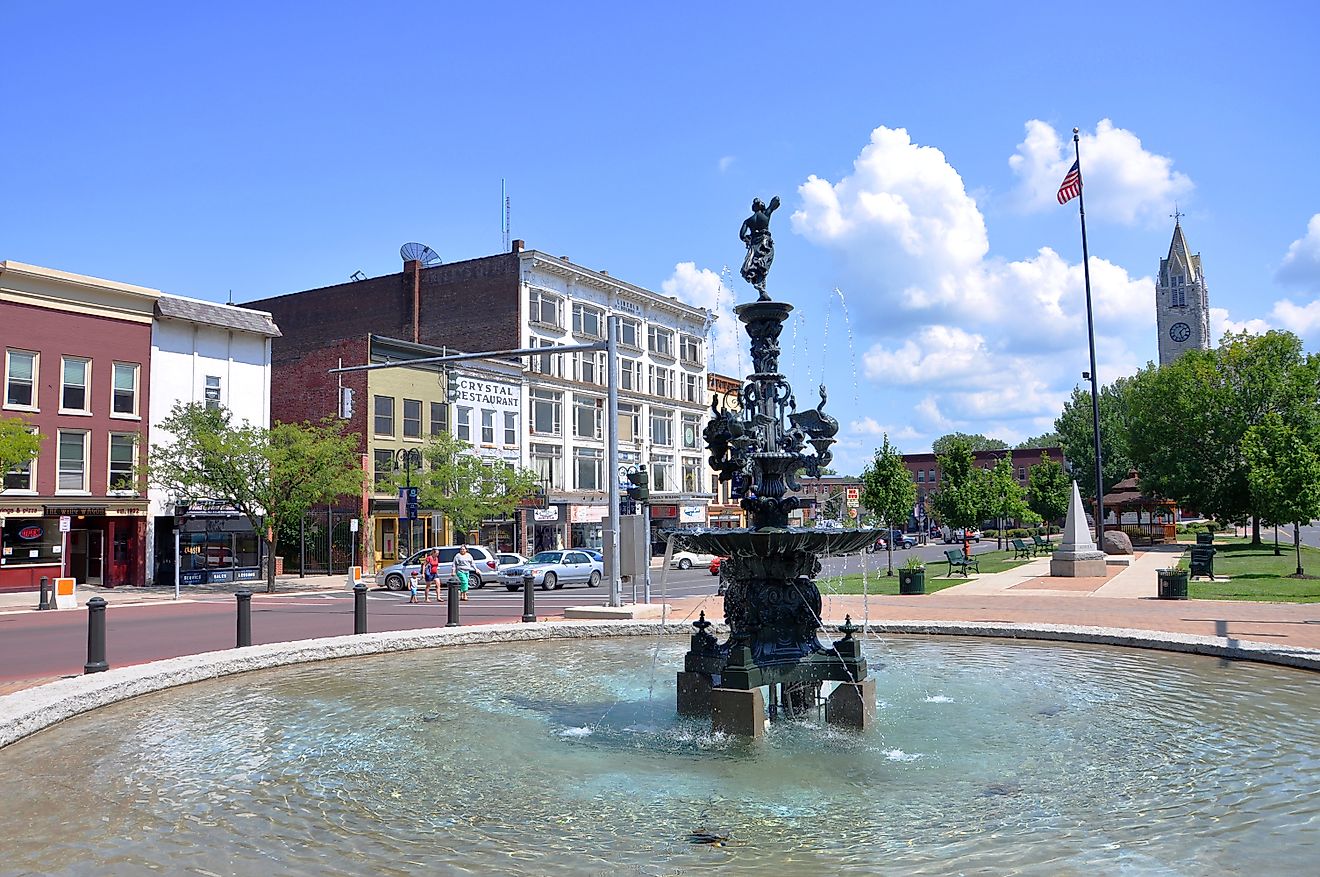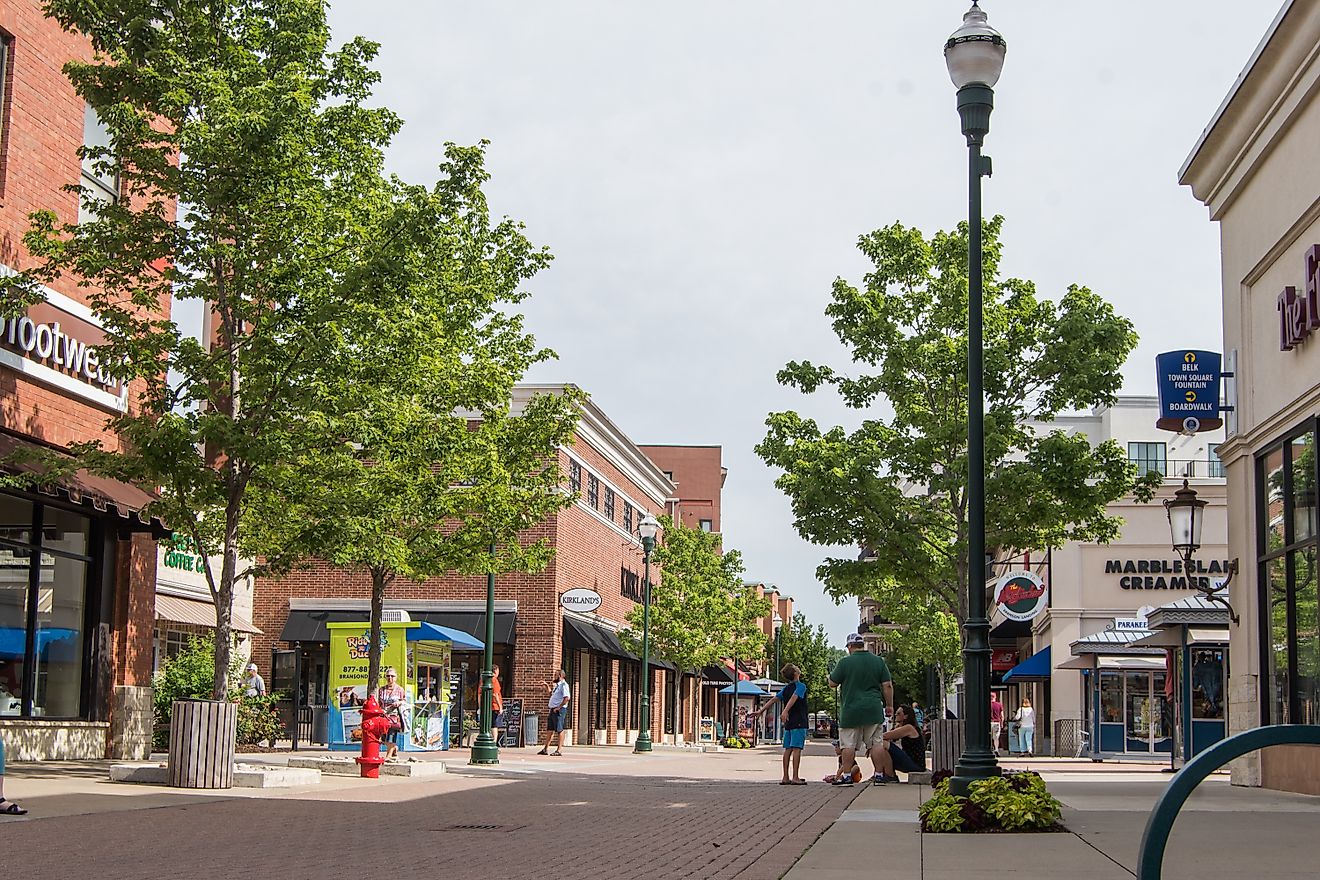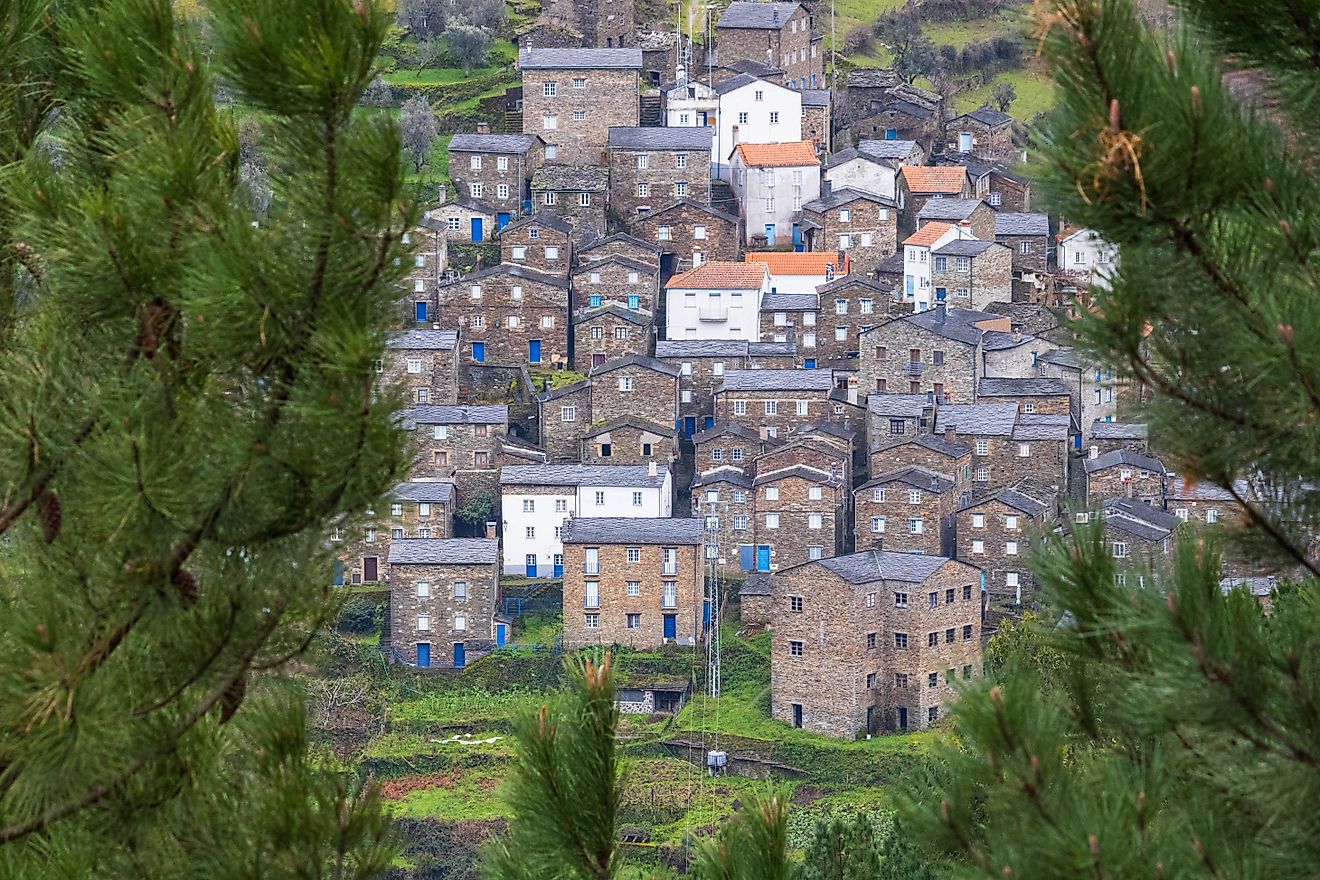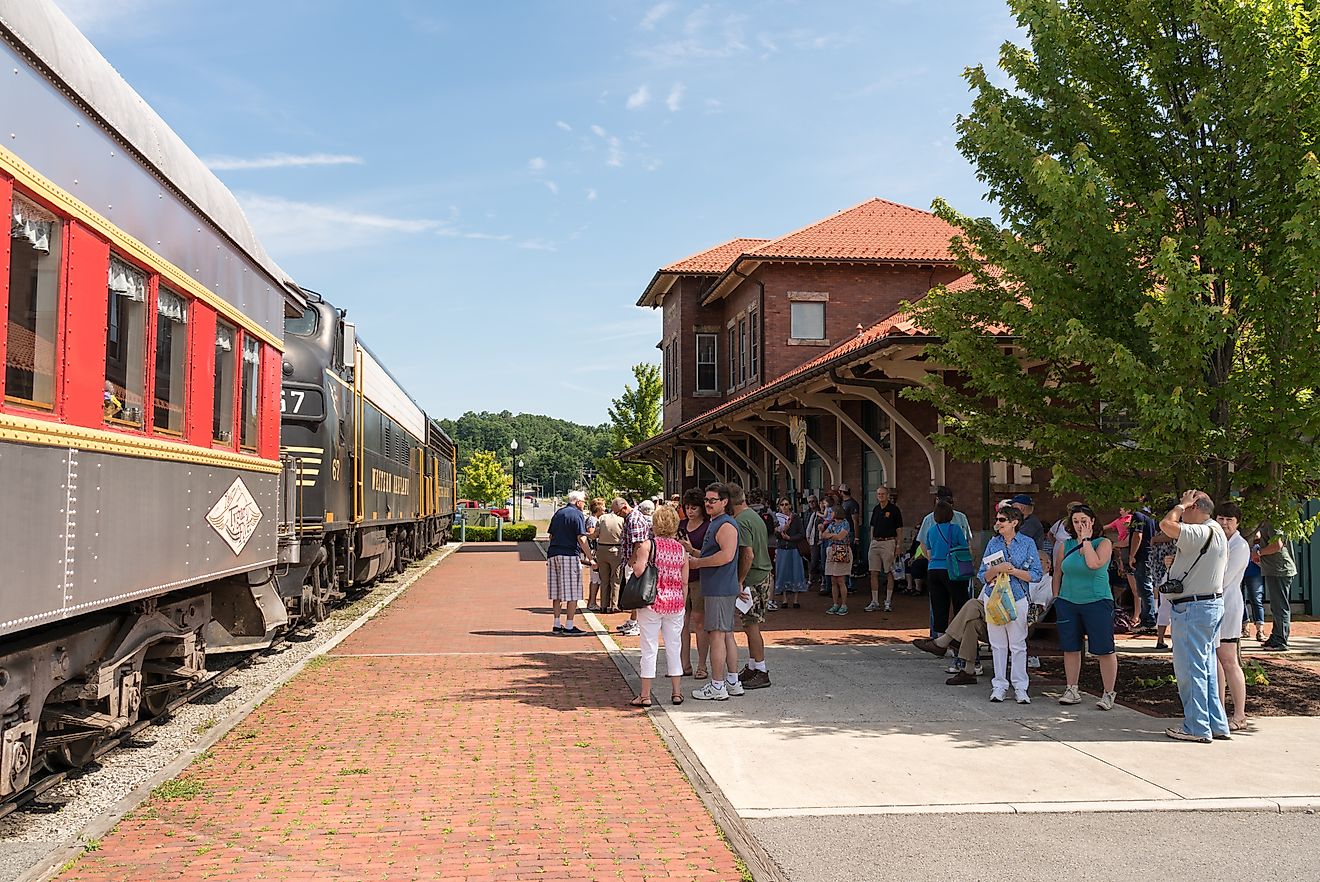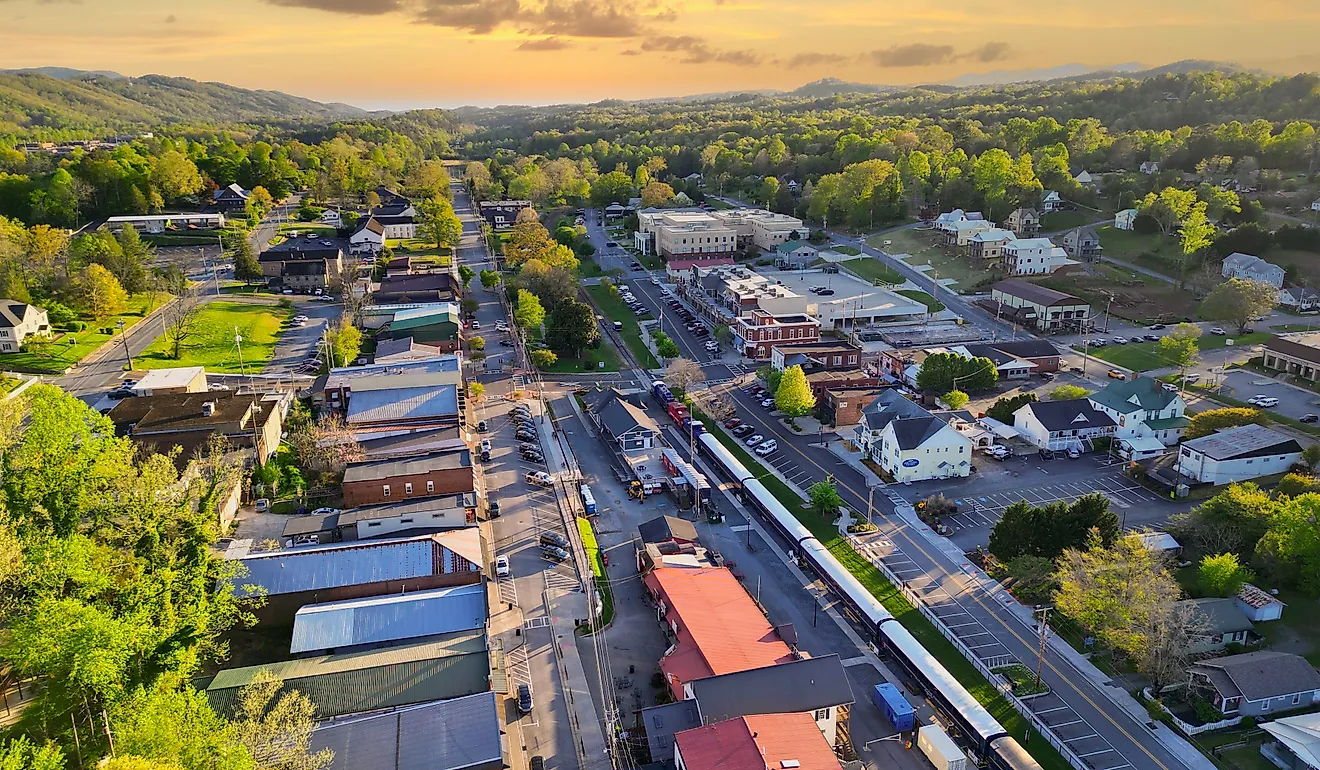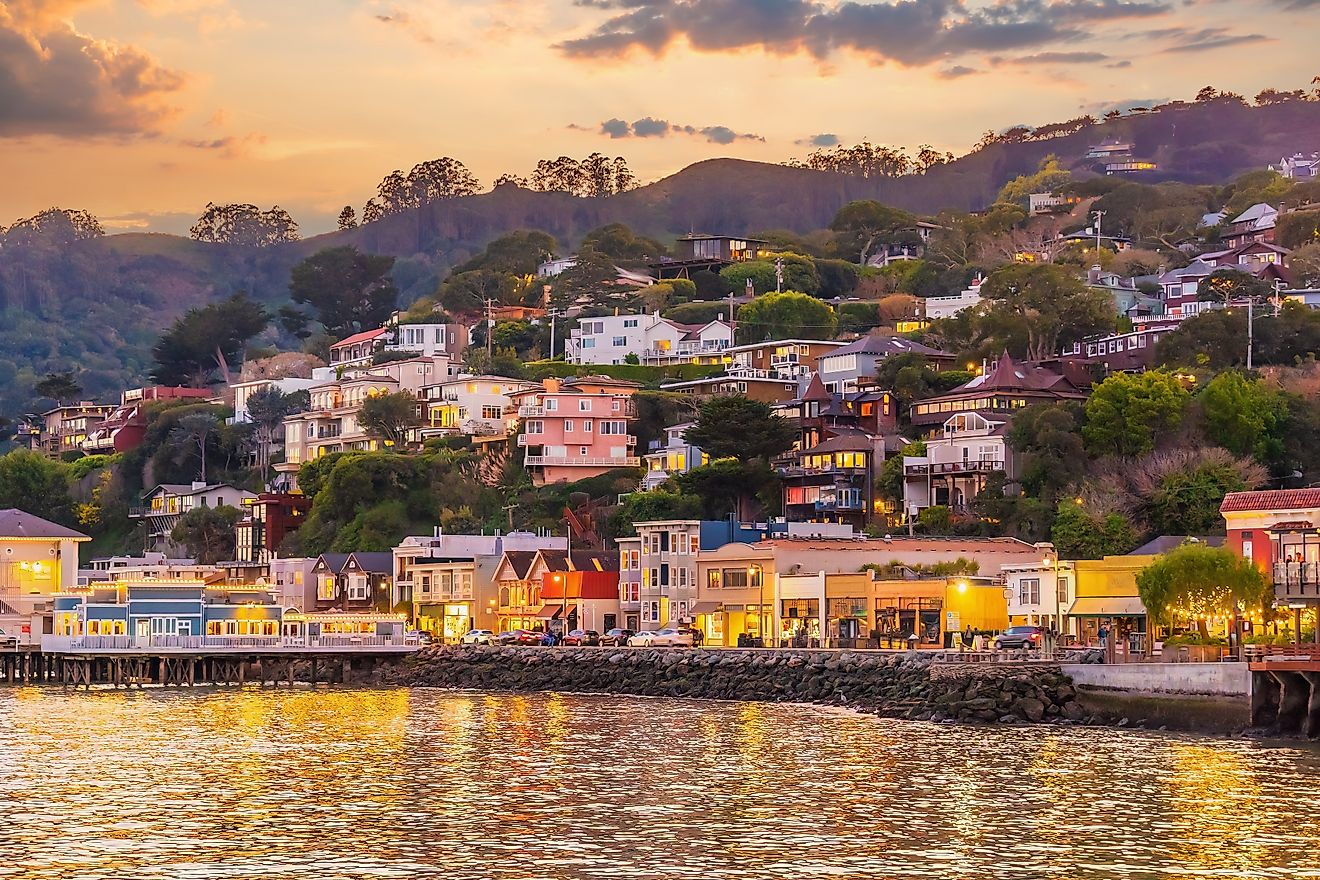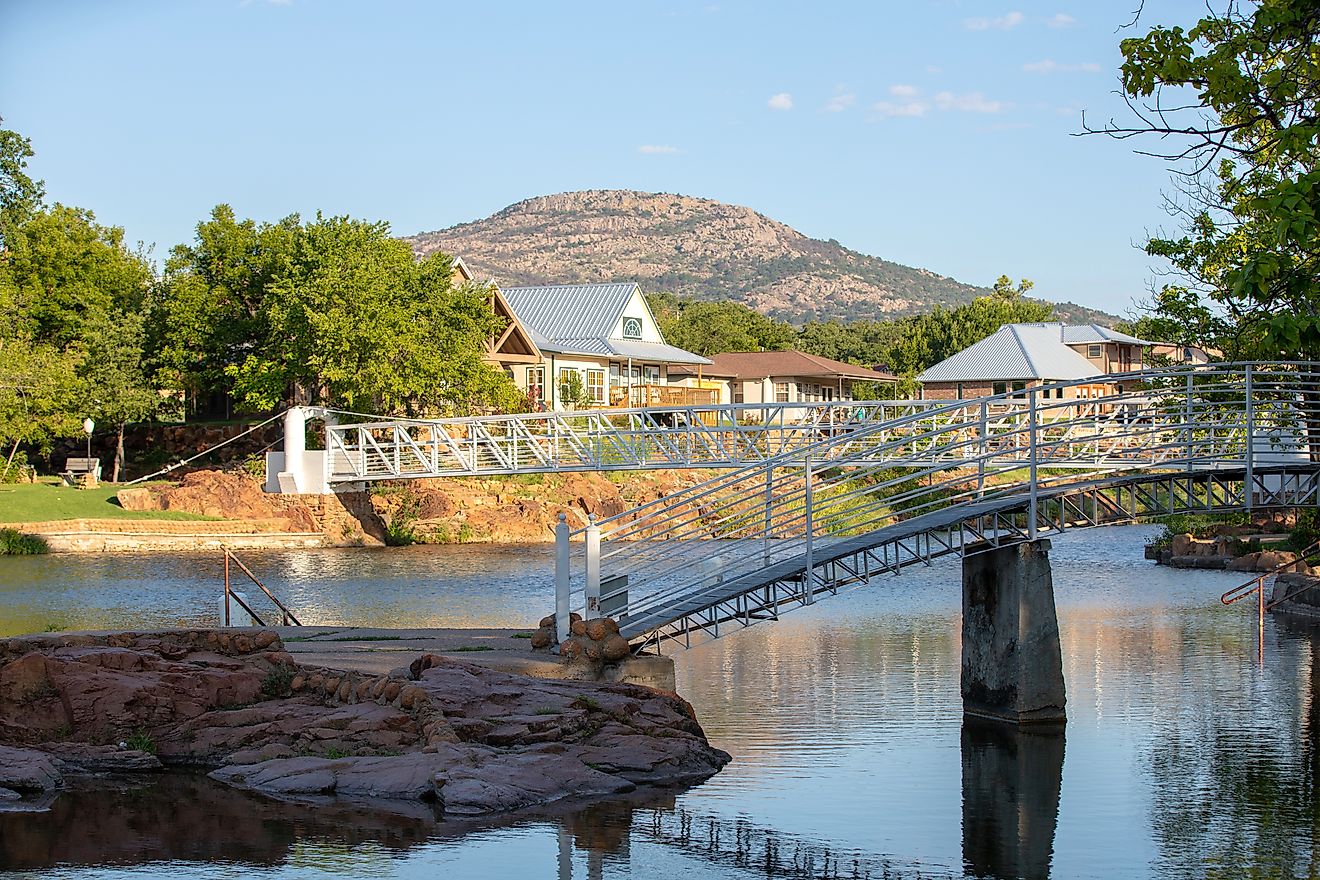
2025's 8 Most Scenic Arizona Towns
Arizona’s unique topography ranges from high desert plateaus to river-carved canyons, and the lands around them shape its most scenic towns. Each place featured in this article sits within a distinct natural setting, whether it’s red rock formations, pine-covered mountains, or the banks of the Colorado River. What follows is a look at the most visually compelling towns in this beautiful state in 2025, places that you should consider for your next Southwestern adventure.
Cottonwood

Cottonwood is in the heart of the Verde Valley, bordered by the Black Hills to the south and red rock cliffs to the north. The town’s scenic value comes mainly from its location along the Verde River, which brings a rare green ribbon through otherwise arid surroundings. Sycamore and cottonwood trees line the local riverbanks, especially visible in Dead Horse Ranch State Park, where trails and lagoons offer wide views of distant formations and seasonal color changes in the foliage later in the year.
Just west, the high desert rises into the Tuzigoot National Monument, an ancient Sinagua pueblo perched on a ridge that overlooks Arizona's vast yet peaceful corner. To the east, the road to Sedona passes through open rangeland and basalt outcroppings before revealing views of the Mogollon Rim and red rock escarpments, meaning you can experience the great outdoors here in every direction.
Cottonwood is also renowned for its wines, as it sits in the "heart of the Arizona wine country." Suppose you want to try some local products. In that case, nearby favorites include Merkin Vineyards Tasting Room & Osteria, Alcantara Vineyards and Winery in nearby Camp Verde, and The Original Jerome Winery in nearby Jerome. Over a dozen other vineyards, tasting rooms, and specialty shops are also within easy reach.
Page
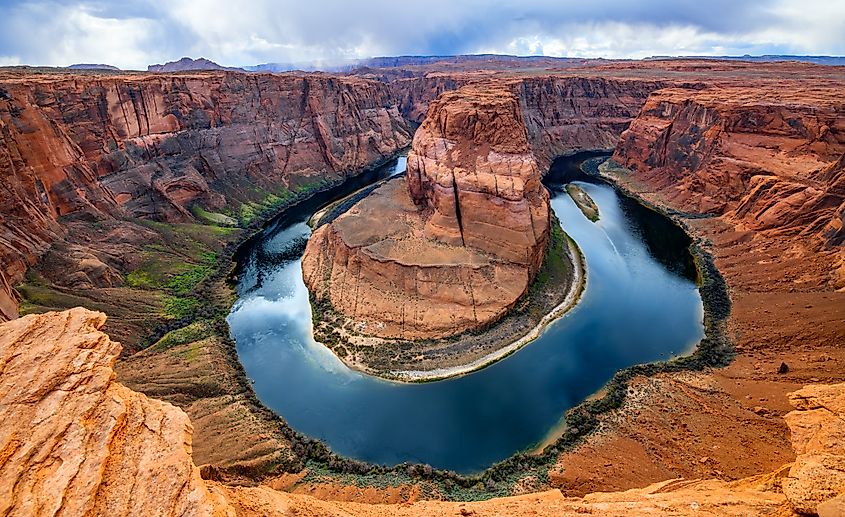
Page is seated on a mesa high above the Colorado River in far northern Arizona, surrounded by many notable sandstone cliffs, slot canyons, and incredible views of Lake Powell. Located in the Glen Canyon region, where water, wind, and time have carved some of the most recognizable geologic formations in the Southwest, this town is a hotbed for photographers, hikers, backcountry bikers, and researchers alike.
Sitting nearby, Horseshoe Bend provides one of the most dramatic natural overlooks in the region, offering a 270-degree view of the river’s bend around a sheer sandstone butte. South of town, Antelope Canyon cuts narrow, twisting corridors through Navajo sandstone, with sunlight creating vivid color contrasts throughout the day. Moreover, Lake Powell adds another layer of scenic and recreational value, with its inlets, steep rock walls along the shore, and deep blue waters stretching into Utah, hosting several boat launches and swimming holes.
This town is roughly 4,200 feet above sea level, which allows for long-distance visibility of the Vermilion Cliffs and Echo Peaks. Its elevated position, proximity to Glen Canyon, and access to river and lake landscapes make this community a must-visit for outdoor adventurers and sightseers.
Sedona
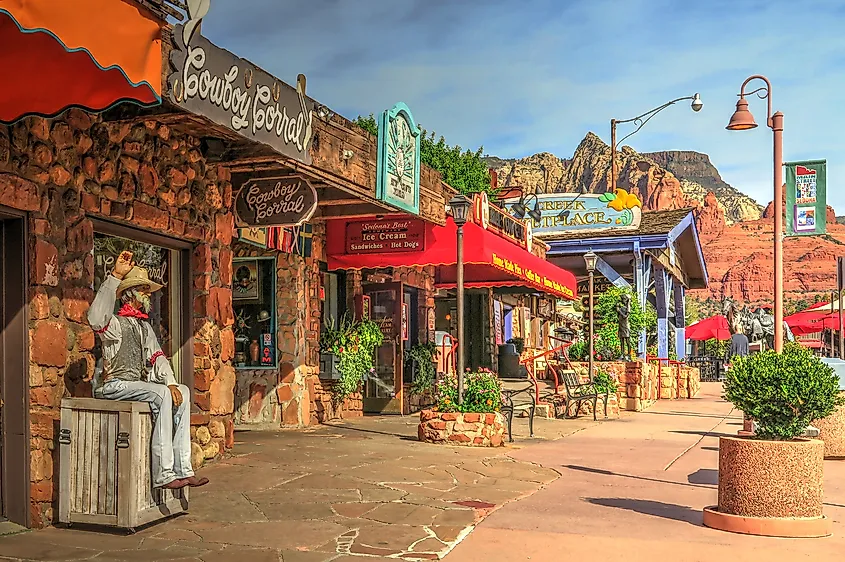
Sedona is a classic Arizona town, defined by its red rock formations, desert buttes, and high desert vegetation framed by the Coconino National Forest. It more specifically sits at the junction of Oak Creek Canyon and the Verde Valley, providing access to one of the most beautiful landscapes in the state, if not the entire United States.
Landmarks like Cathedral Rock, Bell Rock, and Courthouse Butte are among the most photographed geological spots nearby, with the surrounding terrain supporting a range of trails such as Devil’s Bridge and Soldier Pass, both of which offer panoramic views of the area. Oak Creek adds a nice bit of contrast to the dry climate, especially where it cuts through Slide Rock State Park and Red Rock Crossing. Furthermore, the area's layered sedimentary formations are highly picturesque all day, but primarily reflect light dramatically during sunrise and sunset. Sedona's famous scenery also includes views toward the Mogollon Rim to the north and expansive desert plateaus to the south.
The town’s position between elevations of 4,000 and 5,000 feet allows year-round access to its numerous outdoor features, making it one of Arizona's most consistently beautiful and fun-to-explore destinations.
Tubac
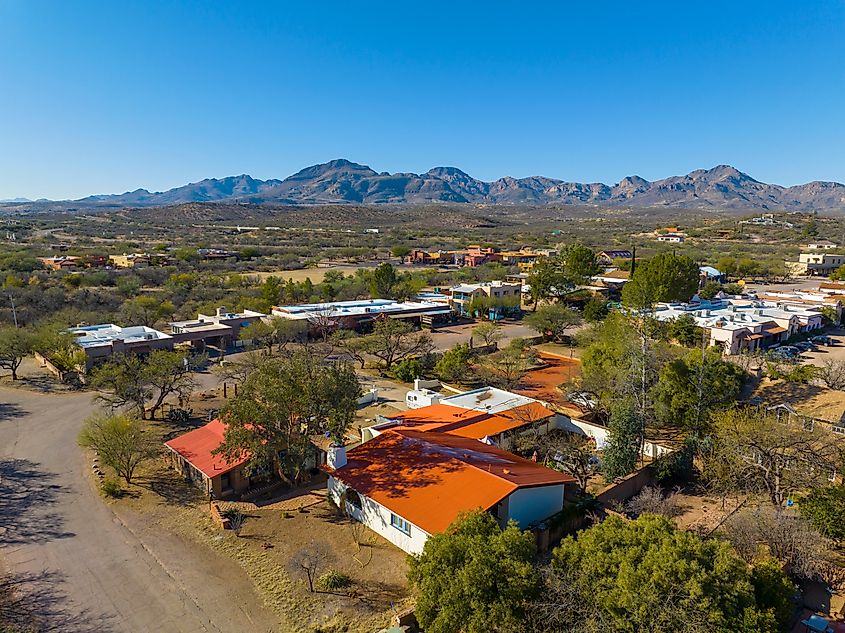
Tubac is located in the Santa Cruz River Valley, surrounded by swathes of desert grasslands and foothills that define the far southern Arizona landscape. Sitting at around 3,200 feet, the Tumacácori and Santa Rita Mountains loom in the distance, both rising sharply and shaping the skyline from nearly every angle. The terrain around Tubac further includes mesquite bosques, cottonwood stands along meandering rivers and ravines, and open plains that stretch south toward the borderlands.
On the other hand, the Tubac Presidio State Historic Park preserves original adobe walls and 18th-century foundations dating back to the era of Spanish colonialism in the region. Furthermore, just a few miles away, the Tumacácori National Historical Park includes mission ruins with massive archways and thick walls.
The Anza Trail, which passes through town, follows an often dry river corridor and provides walking access to shaded riparian areas, with seasonal wildflowers, especially in late winter and spring, brightening the arid desert landscape significantly. Combined with preserved Spanish architecture and uninterrupted desert views, Tubac delivers a scenic mix of history and nature not found in many larger towns in this state.
Bisbee
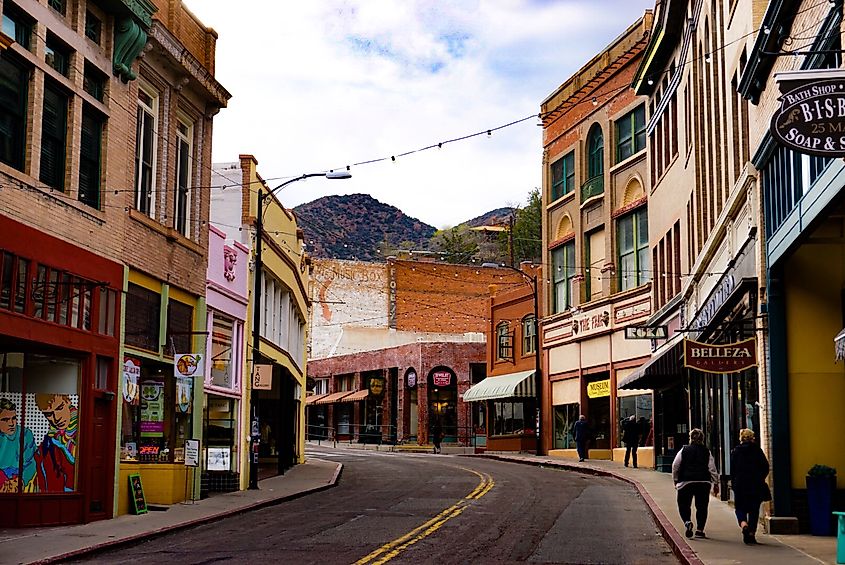
Bisbee is built into the Mule Mountains near the Mexican border, flowing almost flawlessly within the steep terrain. Its layout follows the contours of Brewery Gulch and Tombstone Canyon, giving it a multi-level structure that produces layered views of hillside homes, Wild West-style buildings, and the surrounding wilderness.
Vegetation shifts between desert scrub and oak woodland, creating a diverse landscape that is not typical of lower-elevation Arizona towns. In contrast, the enormous lavender pit mine on the town’s edge adds a touch of oddly interesting to look at, man-made intrigue. Also, just outside Bisbee, views from Juniper Flats or the pass toward Naco open onto vast high desert plains ringed by mountain ranges.
Downtown, the easily walkable historic district retains a collection of early 20th-century structures with attention-grabbing colorful facades and corrugated metal roofs. Visit the Bisbee Mining & Historical Museum for more information on the region's storied past, or embark on an excursion with Old Bisbee Ghost Tours for a more supernatural twist on your stay.
Another benefit of visiting Bisbee is that the lofty elevation keeps temperatures moderate, allowing the area to stay greener longer into the year. Better yet, you stay cooler on otherwise scorching summer days in this southwestern state.
Bullhead City
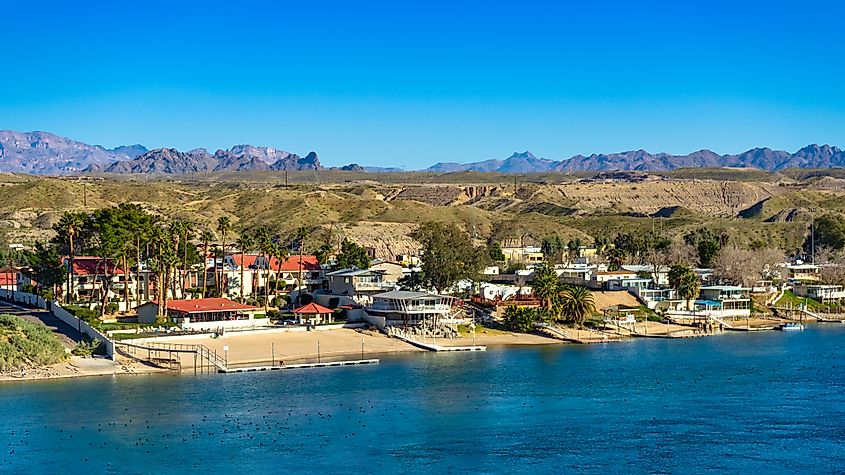
Bullhead City rests directly on the shores of the Colorado River across from Laughlin, Nevada, with the Black Mountains rising sharply behind it and the Newberry Mountains conversely visible across the river. Its location at the bottom of a desert canyon means that flat riverbanks quickly transition into steep, rocky slopes, giving you several ways to see the high and low river. Check out any of the city parks within steps of the river, too, including Bullhead City Community Park, Bullhead City Rotary Park, and a number of nearby beaches that offer clear views up and down the waterway.
To the south, sightlines open toward the convergence of wide desert basins and even a collection of farms, while to the north, the terrain becomes more rugged and mountainous. The surrounding Mojave Desert landscape generally includes volcanic rock fields and dry washes that you are usually free to walk amongst. Just be sure to bring sun protection and lots of water when out.
Jerome
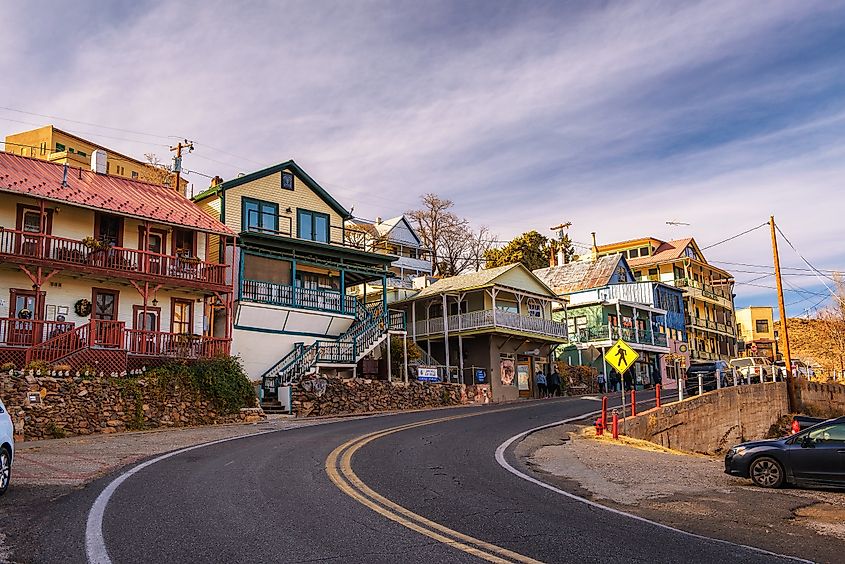
Jerome clings to the side of Cleopatra Hill at over 5,000 feet, with a vantage point that looks across the Verde Valley toward the red rocks of Sedona and the distant San Francisco Peaks beyond. Smaller and quieter than Sedona, Jerome's steep streets and switchbacks are built directly into the slope, giving nearly every structure within great view with fewer crowds.
What makes Jerome particularly eye-catching is the unique contrast between its historic mining-era landmarks and the surrounding topography. Brick buildings, weathered wood, and steel relics are set against the arid deserts and mountains smack dab in the center of Arizona. The entire town itself is designated a National Historic Landmark, in fact, preserving old-timey buildings and walkways dating back to its founding in 1876.
The Mingus Mountain range rises immediately behind the town, with pine forests and ridgelines offering access to high-altitude lookout points and hiking routes like the Woodchute Wilderness trail. Below, the valley stretches for miles, changing color with the seasons, making it an ideal destination to see in the fall.
Stick around for either an early morning or a late night as sunrises bring pink and gold light across the valley floor, while night skies remain clear due to the town’s elevation and minimal light pollution.
Williams
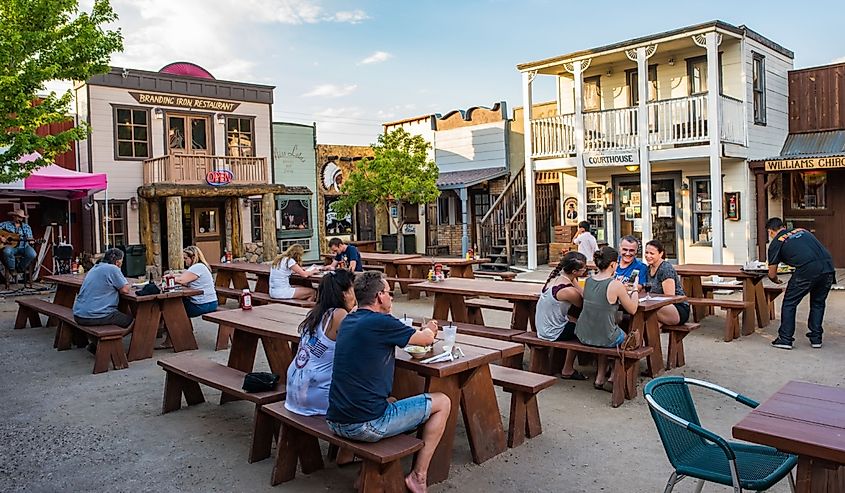
Williams lies on the edge of the Kaibab Plateau, where ponderosa pine forests and volcanic peaks are abundant. Sitting just below Bill Williams Mountain, a nearly 9,260-foot summit that dominates the southern skyline, this community is a year-round outdoor activity and sightseeing landmark.
Williams also marks one of the gateways to the Grand Canyon, via the Grand Canyon Railway, which departs from a restored early 1900s depot downtown. If you're keen on travelling via the road, Route 66 runs directly through town, preserving vintage signs, storefronts, and old side streets on this famously near-abandoned highway. On the other hand, for some on-foot exploration just outside town, routes like Perkinsville Road and the Sycamore Canyon Overlook give high-up access to viewpoints above the surrounding landscapes.
The high elevation here allows for snowfall in winter, which transforms the town and nearby peaks into more of an alpine retreat. Summer monsoons bring cloud build-ups and dramatic light across the Coconino Plateau. Regardless of when you come, Williams is a haven for landscape photographers, outdoorsmen, and history buffs alike to enjoy throughout the year.
See the Best Arizona Offers this Year
Arizona’s most scenic communities showcase the state’s full range of landscapes, from canyon rims to river valleys. Whether carved by water, framed by mountains, or set against desert expanses, each town offers a number of visual treats to truly appreciate the wonders of this classic southwestern staple in 2025.

